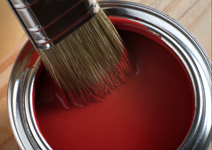

Leben mit AURO
Das Verarbeiten von AURO Produkten ist kinderleicht. Wir stehen Ihnen beratend immer zur Verfügung.
Raw material stories
We would like to tell you some interesting details about our natural raw materials
Did you know…?
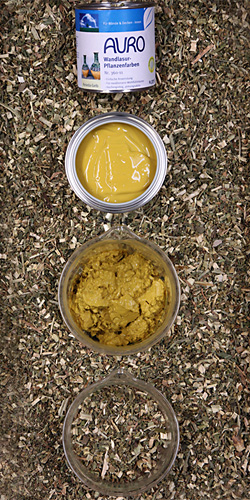
… that Reseda is an ancient dye plant which is also referred to as “dyer's rocket” or “weld”?
It yields a strong yellow dye called luteolin. All above-ground plant parts are used, but it’s the spikes of yellowish-green flowers that are particularly rich in dye.
Prior to the discovery of America, dyer's rocket was one of the most important sources of yellow dye available and was mainly cultivated in England, France and Germany.
The boiled and pressed plant parts form the basis of AURO Wall glaze vegetable paint in reseda yellow.
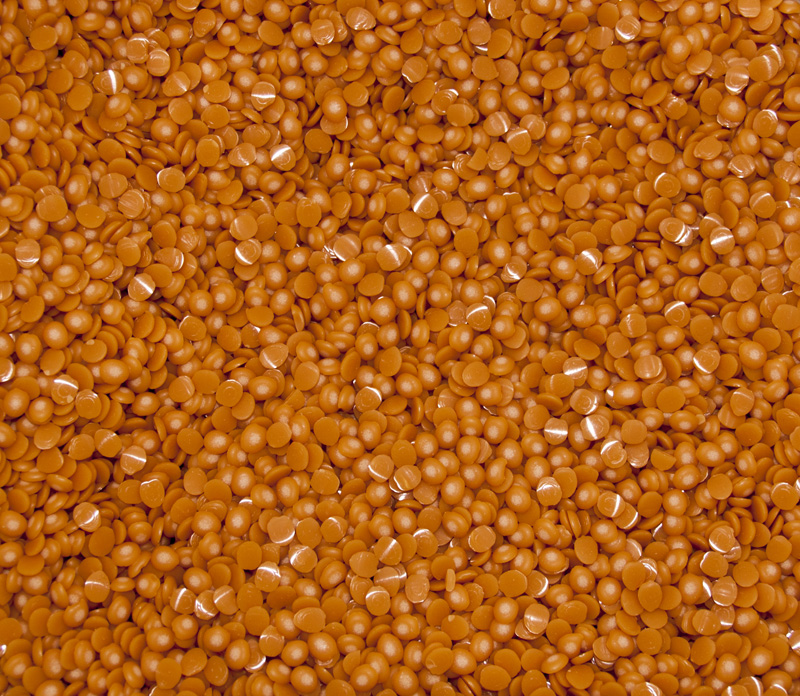 … that carnauba wax is a hard, water-repellent wax obtained from a Brazilian palm tree species?
… that carnauba wax is a hard, water-repellent wax obtained from a Brazilian palm tree species? The leaves of these tall palm trees are cut (they constantly grow again), the wax is liquefied by boiling in water, skimmed off the top and cleaned physically (with bleaching earths).
Thanks to its particular hardness, this wax enhances the mechanical resistance of all soft AURO waxes.
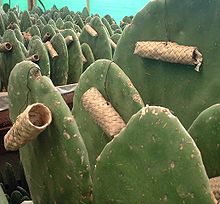 … that cochineal is a red dye produced by scale insects which live on cactuses domiciled in Mexico and on the Canary Isles?
… that cochineal is a red dye produced by scale insects which live on cactuses domiciled in Mexico and on the Canary Isles?Traditionally, cochineal was used for colouring fabrics, makeup and artist’s paints. In the old days, young girls were sometimes told that lipstick is made from lice blood to put them off using it.
This red to violet dye, also referred to as carmine, is also used as food colouring, e.g. for a very well-known liqueur.
AURO uses cochineal to complement vegetable paint pigments in wall glazes by a slightly bluish red colour shade. This dye is also found in AURO's popular Easter egg dyes.
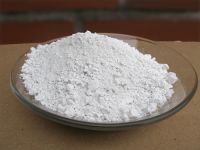 … that titanium dioxide is a very opaque, non-toxic white pigment used for paints and varnishes?
… that titanium dioxide is a very opaque, non-toxic white pigment used for paints and varnishes? It is made from natural minerals by separation of coloured companion substances and is also used for the neutralisation of harmful substances as it is a catalyst pigment with a special, fine-particle structure and a large surface.
Titanium dioxide is chemically stable, non-toxic and can be found in the form of food additive under the designation E 171, e.g. in toothpaste, chewing gum or cough sweets.
It is also used in oil painting. In the technical industry, it is used for paints and varnishes, textiles, paper and as UV blocker in sunscreen and as a brightener in drugs (tablets).
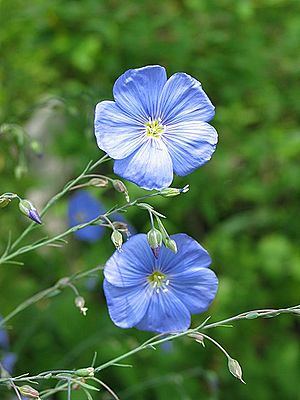 … that linseed oil is a fatty seed oil of the linseed plant and produced by cold and warm pressing?
… that linseed oil is a fatty seed oil of the linseed plant and produced by cold and warm pressing? AURO only uses linseed oil produced by organic farms, some of which are local. Due to its high content of mono- and polyunsaturated fatty acids, linseed oil is characterised by its fast curing process which is why it is suitable as binder in oil paints. Used as a binding agent, it provides oils with high elasticity and flowability.
The oil has a spicy scent of hay. Linseed oil was and still is the most important binder for oil paints, preceding all other drying oils (e.g. poppy-seed oil, walnut oil). The use of oil-based paints in painting is actually first mentioned in formulations from the 8th century.
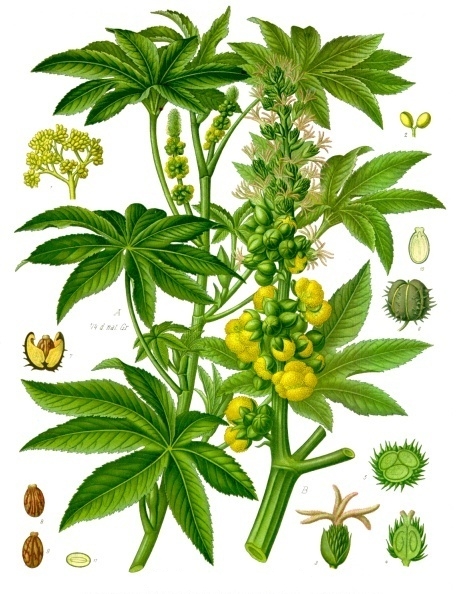 ... that castor oil is produced from the seeds of the subtropical ricinus shrub, also referred to as "wonder tree"?
... that castor oil is produced from the seeds of the subtropical ricinus shrub, also referred to as "wonder tree"? The fast-growing plant, which will grow up to five metres in height within a few months, forms red brown, spiny fruit which contain bean-shaped seeds (castor seeds). The viscous, transparent to yellowish castor oil is produced from these seeds by cold pressing.
In contrast to the seed coat, which contains the toxic substance ricin, castor oil is non-toxic. The toxic substance is lipophobic and is left behind in the residues after pressing the seeds.
Castor oil is subjected to water withdrawal, then thickened by boiling and becomes stand oil which is used as a binding agent for AURO care products and cleaning agents.
